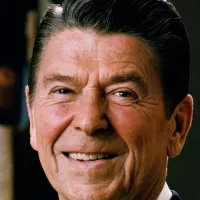Energy Star is a program run by the U.S. Environmental Protection Agency (EPA) and the U.S. Department of Energy (DOE) to promote energy efficiency. Products meeting specific EPA energy-efficiency criteria can display the ENERGY STAR logo. This helps consumers easily identify and purchase energy-saving products, reducing energy consumption and contributing to environmental protection.
4 hours ago : Trump Administration Considered Shutting Down Energy Star Program, Sparking Controversy Over Energy Efficiency
Sources indicated the Trump administration's plan to shut down the Energy Star program, raising concerns about energy efficiency and potential financial implications. Shutting down Energy Star would impact consumers and the environment. The decision faced opposition.
1992: Energy Star Program Established
In 1992, the Environmental Protection Agency established the Energy Star program under the authority of the Clean Air Act.
1995: Program Expansion
In 1995, the Energy Star program was significantly expanded to include labels for residential heating and cooling systems and new homes.
1999: Small Business Recognition Award
In 1999, the U.S. Environmental Protection Agency (EPA) established an annual award to recognize small businesses that demonstrate abilities to reduce waste, conserve energy, and recycle, using resources and ideas outlined in the Energy Star program.
2000: Annual Impact Survey
In 2000, the Consortium for Energy Efficiency was directed by members to begin an annual survey of the Energy Star program's impact.
2005: Energy Policy Act Amendment
In 2005, the Energy Policy Act, section 131, amended the Energy Policy and Conservation Act, section 324, further defining the authority of the Energy Star program.
November 2008: Improved Television Specifications
In November 2008, television specifications were improved to limit on-mode power use, in addition to standby power, which is limited by current specifications. Standby power consumption for televisions must be 3 watts or less.
2008: Appliance Savings
As of early 2008, average refrigerators needed to achieve 20% savings over the minimum standard and dishwashers needed to achieve at least 41% savings to qualify for Energy Star. The EnergyGuide label was used to show the annual cost of operation compared to other models.
May 15, 2009: Computer Server Specifications Version 1.0 Released
On May 15, 2009, the EPA released Version 1.0 of the Computer Server specifications, covering standalone servers with one to four processor sockets.
March 2010: GAO Report on Certification Process
In March 2010, the Government Accountability Office (GAO) released a report based on covert testing, finding that the Energy Star product certification process was vulnerable to fraud and abuse due to its self-certification nature. However, the GAO found no evidence of consumer fraud relating to the quality or performance of Energy Star qualified products.
February 1, 2011: Accredited Testing Requirement Added
On February 1, 2011, the EPA/DOE added the requirement that all products registered under the Energy Star service mark must be tested by an AB (Accredited Body) or CB (Certification Body) Laboratory.
2011: Third-Party Certification Instituted
In response to a GAO report, the Environmental Protection Agency instituted third-party certification of all Energy Star products starting in 2011.
December 16, 2013: Computer Server Specifications Version 2.0 Effective
On December 16, 2013, a second tier to the Energy Star specification adding active state power and performance reporting for all qualified servers, as well as blade and multi-node server idle state requirements became effective. The Version 2.0 Energy Star specification for Computer Servers came into effect on December 16, 2013.
September 10, 2014: Energy Star 6.1 Specifications Effective
On September 10, 2014, Energy Star 6.1 specifications became effective.
2016: Employment in Energy Star Manufacturing
According to the U.S. Energy and Employment Report for 2016, 290,000 American workers are involved in the manufacture of Energy Star certified products and building materials.
2016: Product Verification Testing Results
In 2016, 1,881 product models were subject to verification testing with an overall compliance rate of 95% under the Energy Star program.
2016: Homeowner Savings
In 2016, U.S. homeowners living in Energy Star certified homes saved $360 million on their energy bills.
March 2017: Proposed Budget Elimination
In March 2017, the Trump Administration proposed a budget that would eliminate the Energy Star program, prompting widespread support for the program.
2017: Independent Certification Bodies and Laboratories
As of 2017, there are 23 independent certification bodies and 255 independent laboratories recognized for purposes of Energy Star product certification and testing.
2017: Projected Employment Growth
The U.S. Energy and Employment Report projects that employment in energy efficiency will grow much faster than other areas of the energy sector—9 percent in 2017 vs. average projected growth of 5 percent across all of the energy sector—and that Energy Star will be an integral part of that market.
November 16, 2018: Energy Star 7.1 Specifications Effective
On November 16, 2018, Energy Star 7.1 specifications became effective.
2018: Expiration of EU agreement
In 2018, a 15-year agreement between Energy Star and the European Union expired. Additionally, a previous agreement with the European Free Trade Association also ended in 2018.
October 15, 2019: Version 8.0 Specification Finalized
On October 15, 2019, the Version 8.0 specification for computers was finalized.
October 15, 2020: Version 8.0 Specification Effective
On October 15, 2020, the Version 8.0 specification for computers became effective.
2020: Commercial Building Energy Use Impact
Energy Star estimated in 2020 that energy use in commercial buildings accounts for 20% of greenhouse gas emissions, costing more than $100B per year.
2020: Energy Star Certification Updated Guide
In 2020 Energy Star released an updated guide for verifying Energy Star certifications.
2020: Program Separation for New Construction
In 2020, ENERGY STAR separated single-family and multifamily construction types into their own programs: Single-Family New Construction (SFNC) and Multifamily New Construction (MFNC).
2023: Launch of NextGen Certification
In 2023, a new tier of ENERGY STAR certification, called the ENERGY STAR NextGen Certified Homes and Apartments, will be launched. This new certification uses a baseline of the ENERGY STAR Single-Family and Multifamily certification, with additional requirements such as heat pump water heaters and EV-ready charging capabilities.
Trending

22 minutes ago Denzel Dumfries shines for Inter Milan after injury return and Barcelona thriller.

23 minutes ago Lautaro Martínez eyes Champions League final as Inter faces Barcelona showdown.

23 minutes ago Torey Krug's Career Likely Over: Blues GM Announces Unfortunate Update on Defenseman

23 minutes ago Eric García: Barcelona's New Lateral Choice by Hansi Flick, A Crucial Player Fight.

23 minutes ago Supreme Court revives Trump's ban on transgender troops, allowing enforcement to begin.

24 minutes ago Alex Garland to Direct 'Elden Ring' Film Adaptation for A24: Report
Popular

Jane Goodall is a renowned English primatologist zoologist and anthropologist...

Ronald Reagan the th U S President - was a...

Michael Jordan also known as MJ is an American businessman...

Pope Francis is the current head of the Catholic Church...

Cristiano Ronaldo often nicknamed CR is a highly decorated Portuguese...
The Real ID Act of is a US federal law...



